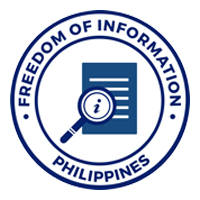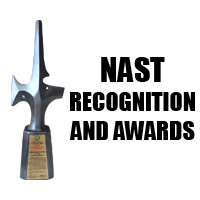The National Academy of Science and Technology, Philippines (NAST PHL), through its Engineering Sciences and Technology Division (ESTD), chaired by Academician Reynaldo B. Vea conducted a forum on Information and Communications Technology (ICT) Infrastructure on March 28, 2014 at Hyatt Hotel Manila. The forum focused on the long-term strategic development plan of the national ICT infrastructure to make the country more competitive, the people more innovative, and communities more resilient. Acd. William T. Torres, a member of NAST ESTD served as the focal person of the forum.
Invited experts were Acd. Torres, Acd. Jose B. Cruz, Jr., also a member of ESTD, Mr. Rolando Alarcon, secretary general of the Philippine Electronics and Telecommunications Federation, and Mr. Dondi Mapa of Microsoft Philippines who was a deputy commissioner of the Commission on Information and Communications Technoogy (now DOST-ICTO).
Acd. William G. Padolina, NAST President, welcomed the participants from the different public and private institutions. He said that ICT has increasingly become an important vehicle in our economy.
Acd. Torres emphasized the need to fix the ICT infrastructure in our country since improved infrastructure produces abundant benefits for the economy, environment, and social progress. He cited the three most problematic factors which have significantly affected the low ranking of the Philippines in the global competitiveness index, namely, corruption, bureaucracy, and infrastructure. He noted that if we do well in ICT, the initiative will also help improve the other infrastructure sectors.
Mr. Alarcon stated that the challenges that our national ICT infrastructure encounter are: (1) to improve the country’s competitiveness in the global arena; and (2) to increase our capability to use ICT in the country’s development, operational efficiency, and security. He said that ICT infrastructure should be considered as a utility service, as vital a requirement as other infrastructures, for us to connect and survive.
Acd. Cruz stressed that the Philippine ICT infrastructure need to be more advanced for the massive information flow through the Internet, inside and through the geographical boundaries. The role of government is to focus on security, public good aspects, intellectual property and access to other critical infrastructures.
Mr. Mapa reported that we are now entering the golden age of demographics — an era between 2015 and 2050 during which time the majority of the population in this country will be in the labor force with the highest level of productivity. He stressed that if we want our country to enter this golden age, we need to have a good ICT infrastructure. He also noted that there is no such thing as spectrum scarcity because all we need to do is allocate it dynamically.
In the open forum, Acd. Torres suggested that there is a need to introduce a new set of players in the ICT industry. These are companies that will add more value to the existing products and services from this industry — which presently basically consists of three sets of stakeholders, namely, telephone companies, network element suppliers, and consumers. He suggested that we come up with a new model that can be used as the strategic framework for developing the ICT industry. He indicated that while there are already many technology solutions the current ICT infrastructure has not yet been developed enough to support this initiative.
This RTD activity has brought focus to the importance of understanding the critical role of the national ICT infrastructure, together with other infrastructures, towards achieving our country’s national development goals, including becoming more globally competitive. This understanding should translate into providing the means — ICT infrastructure and resources that are available nationwide — to empower all Filipinos and Philippine-based enterprises to be aware about, access, and exploit the many opportunities that abound all over the world for creating goods and services of higher value for both the domestic and international markets. The same infrastructure can be used to upgrade capabilities in governance and government services, manufacturing, agriculture, education, etc. Moreover, accelerating the development of other national infrastructures, including transportation, water, energy, etc., will greatly depend on this widely shared ICT infrastructure. In this modern world, not having good access to information and communication resources puts one at a great disadvantage; thus, it is imperative that all sectors of Philippine society appreciate the urgency of investing in a comprehensively designed, well planned and implemented, and competitively-managed national ICT infrastructure.
About fifty participants from the academe, different public and private sectors attended this event. The forum, a sequel to a round table discussion previously held in December 2013, was conducted in preparation for the NAST 36th Annual Scientific Meeting (ASM) on July 9 and 10 with the theme, “Infrastructure, Information, and Innovation (I3) for National Development, Competitiveness, and Resiliency.”











